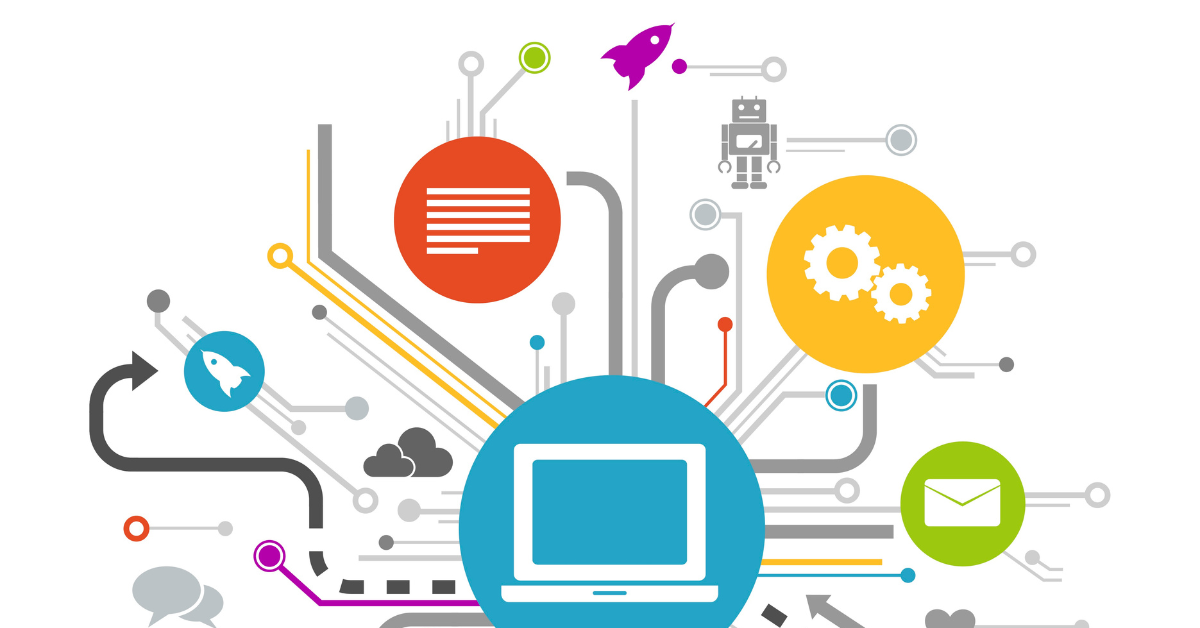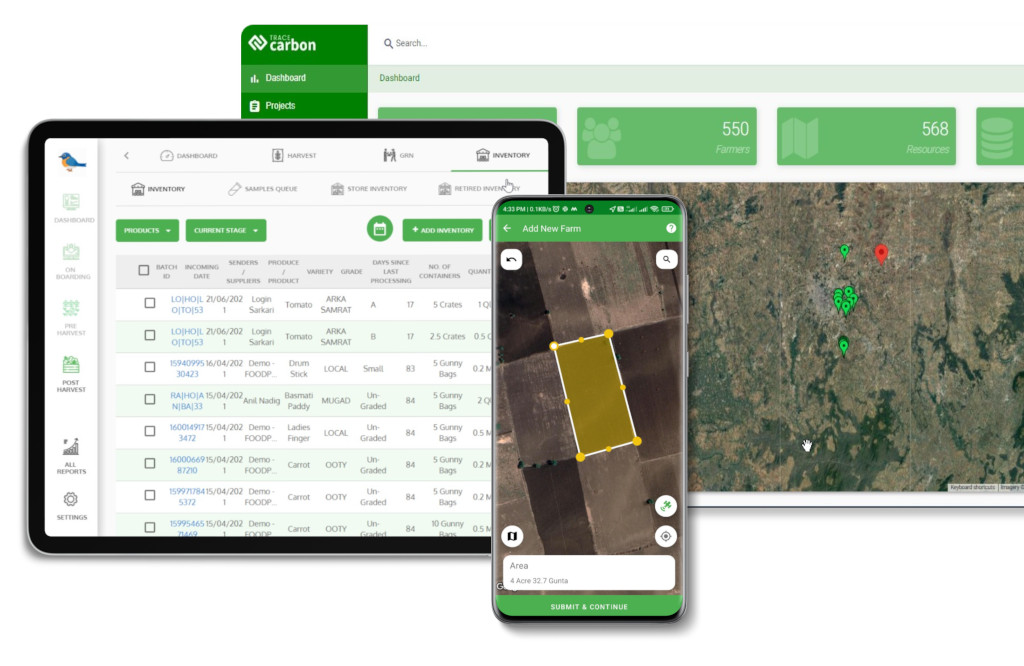Contact: +91 99725 24322 |
Menu
Menu
Quick summary: Discover how digital transformation for sustainability helps global supply chains meet EUDR, CSRD & ESG goals—while gaining a competitive edge with traceability, compliance automation, and real-time insights.

Digital transformation for sustainability is no longer a “nice-to-have”—it’s a business imperative. From climate regulations like EUDR and CSRD to mounting investor expectations and buyer-led ESG audits, the demand for supply chain visibility and traceability has reached a tipping point. Businesses that can’t prove sustainable sourcing or carbon accountability risk losing market access, buyer confidence, and regulatory clearance.
The biggest blocker? Most companies are still stuck using fragmented, manual systems to manage complex sustainability data—spreadsheets, scattered emails, and offline records that simply can’t keep up with real-time compliance demands. These outdated methods increase the risk of missed audits, reporting errors, and even export rejections.
In this blog, we’ll break down how forward-thinking companies are using digital tools to transform sustainability from a cost center into a competitive advantage—with full traceability, audit-ready data, and scalable ESG reporting across their supply chains.
Key Takeaways
Digital transformation for sustainability isn’t just about technology—it’s about changing how your organization thinks, acts, and measures impact.
At its core, it means moving away from manual, siloed, spreadsheet-based operations and replacing them with connected, smart systems that help you track, prove, and improve your sustainability goals in real time. Whether it’s mapping the origin of raw materials, calculating Scope 3 emissions, or demonstrating due diligence under EUDR—this isn’t work you can afford to do reactively anymore.
Imagine an agri-exporter still using Excel to track hundreds of smallholder farms across multiple regions. Every audit cycle becomes a scramble—emails fly, files go missing, and field agents work overtime trying to reconcile land records and certifications.
Now, compare that with a digital system that auto-syncs GPS farm data, captures farmer declarations via mobile, and generates traceability reports on demand. No more guesswork. No more gaps. Just audit-ready ESG visibility in minutes.
That’s digital transformation in action. It doesn’t just save time—it empowers teams to make smarter, faster, and more defensible decisions.
You’re under pressure to prove your supply chain is sustainable, transparent, and fully traceable. But here’s the hard truth: if you’re still managing compliance with spreadsheets, email threads, and static PDFs, you’re already behind.
Manual systems feel safe—familiar, even. But in today’s regulatory landscape, they’re quietly becoming your biggest liability.
Spreadsheets Can’t Keep Up with EUDR, CSRD, or ESG
Spreadsheets were never built for real-time traceability. They don’t capture plot-level geolocation. They don’t flag missing land legality documents. And they definitely don’t scale when you’re managing hundreds of farmers, co-ops, or suppliers across borders.
You may think, “It’s working—for now.” But what happens when an auditor requests proof of geolocation for every cocoa farm you sourced from last season? Or when a buyer needs a risk report tied to your palm oil shipments—by lot, not just by region?
Ask any sustainability or procurement lead today what keeps them up at night, and it’s not just “compliance.” It’s the complexity—hundreds of suppliers, inconsistent data, last-minute audits, and growing pressure to prove that your supply chain is not just efficient, but ethical, traceable, and deforestation-free.
This is where digital transformation steps in—not as a buzzword, but as a practical solution to a very real problem: you can’t manage what you can’t see.
Imagine having the GPS coordinates of every sourcing farm, mapped and linked to specific batches of your product—all updated in real time. That’s what plot-level geolocation enables. For EUDR compliance, it’s not optional—it’s mandatory. But it’s also a strategic asset: it tells your buyers exactly where your product came from, down to the field.
Still building Due Diligence Statements manually in Excel? That’s a fast track to missed deadlines and rejected shipments. A digital platform automates the process: verifying documents, checking risk scores, compressing GeoJSON files, and preparing DDS-ready submissions—all without switching between tools. It’s like having a compliance co-pilot built into your workflow.
Already have FSC, RSPO, or Rainforest Alliance certification? Great. But certifications alone don’t satisfy EUDR—they’re supporting evidence, not a substitute. A digital system connects those certifications to specific products and plots, making your sustainability claims verifiable, auditable, and buyer-ready.
Your field team shouldn’t need laptops or stable internet to collect data. With a mobile-first approach, you can onboard farmers and collect geolocation, legal docs, and crop details—even offline. That means inclusive traceability, even in remote or underserved regions.
See how leading agri teams are managing traceability, geolocation, and compliance even in the most remote regions.
Read the case study to discover how offline sync and GPS mapping are transforming farm management from the ground up.
It’s not enough to say you’re sustainable—you have to show it, with data. Digital platforms let you track real-time ESG metrics like GHG emissions, water usage, biodiversity impact, and labor practices. And unlike static reports, this data is live, drillable, and aligned with CSRD, SFDR, and other evolving frameworks.

Manual compliance can’t scale. If your team is juggling spreadsheets, PDF checklists, and shared drives to meet EUDR, CSRD, or ESG goals, you’re not alone… but you’re also not ready for what’s coming. You don’t need to rip and replace your systems—you just need the right digital tools that connect the dots and make your supply chain traceable, auditable, and resilient.
Here’s the modern tech stack that’s turning sustainability into a strategic win:
These are your digital command centers. They track every product from farm plot to final shipment, linking it to farmer data, certifications, and batch IDs. No more toggling between 15 Excel files to prove where a cocoa bean or palm fruit came from.
From Farm to Fork—Know Every Step.
Want full visibility into your food supply chain? See how our traceability platform helps you track origin, quality, and compliance in real time.
Explore the Food Traceability Platform and build trust with every batch.
Plot-level geolocation is non-negotiable under EUDR. But most of your farmers or sourcing agents work in areas with patchy internet. That’s where offline geospatial mapping comes in—capture coordinates in the field and sync later.
Not all suppliers are equal. Some are high-risk due to deforestation alerts, missing legality docs, or origin country corruption scores. Smart risk engines help you prioritize and mitigate these threats—before they show up in your audit.
Tracking emissions, labor rights, biodiversity, or water usage manually? Forget it. Today’s platforms connect your field, procurement, and certification data into CSRD-aligned ESG dashboards—ready for disclosure, not just data dumps.
Whether you’re preparing for EUDR, scaling ESG reporting, or tired of chasing data across disconnected systems, TraceX provides a single platform to digitize, automate, and unify your supply chain sustainability workflows—from farm to export gate.
Here’s how TraceX delivers impact where it matters most:
Sustainability used to be a reporting burden. Today, it’s a competitive edge. Companies that invest in digital transformation for sustainability aren’t just checking compliance boxes—they’re building smarter, traceable, and future-ready supply chains.
The shift is already happening. Brands embracing farm-to-fork visibility, automated compliance (like EUDR DDS), and real-time ESG dashboards are winning customer trust, de-risking operations, and opening doors to premium global markets.
Don’t let outdated tools hold you back.
Now’s the time to turn sustainability into strategy—and digital into your differentiator.
It’s the use of technology (like traceability platforms, ESG dashboards, and risk engines) to digitize and automate sustainable practices, helping supply chains stay compliant and resilient.
By enabling plot-level geolocation, legal documentation capture, and automated reporting, digital tools streamline the due diligence and audit processes required under these regulations.
Agribusinesses, exporters, manufacturers, and any company with upstream sourcing obligations benefit—especially those targeting EU markets or ESG-conscious buyers.
